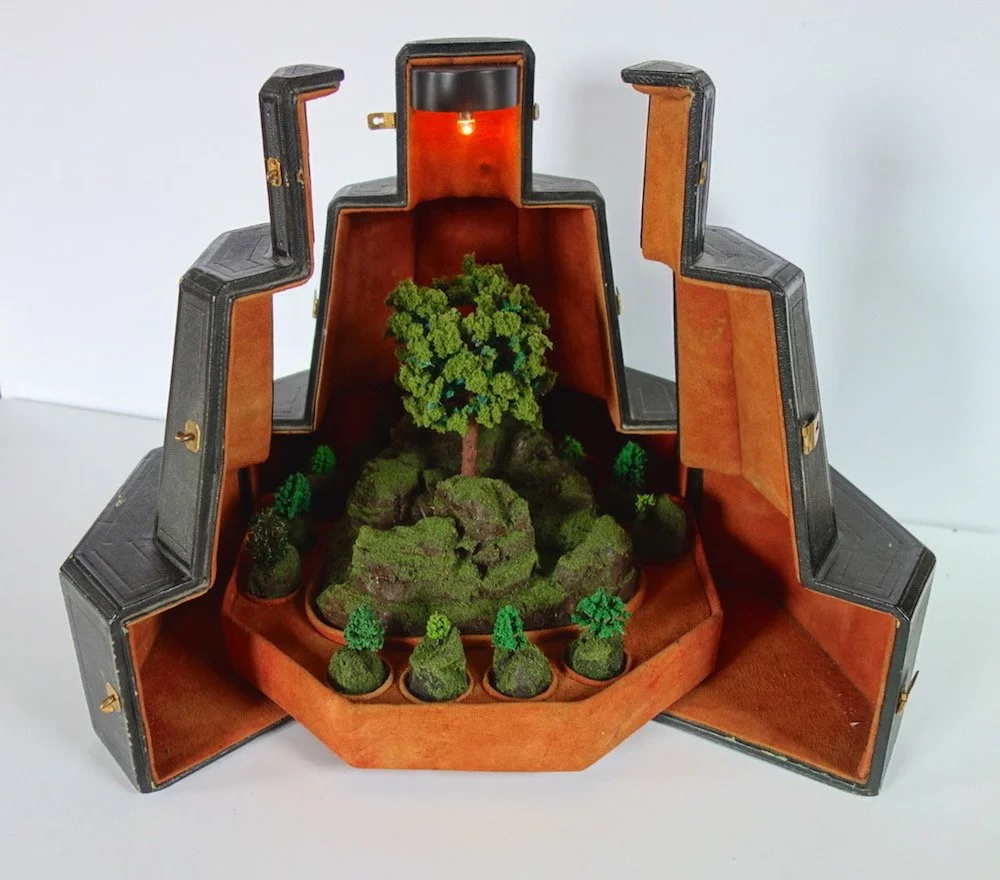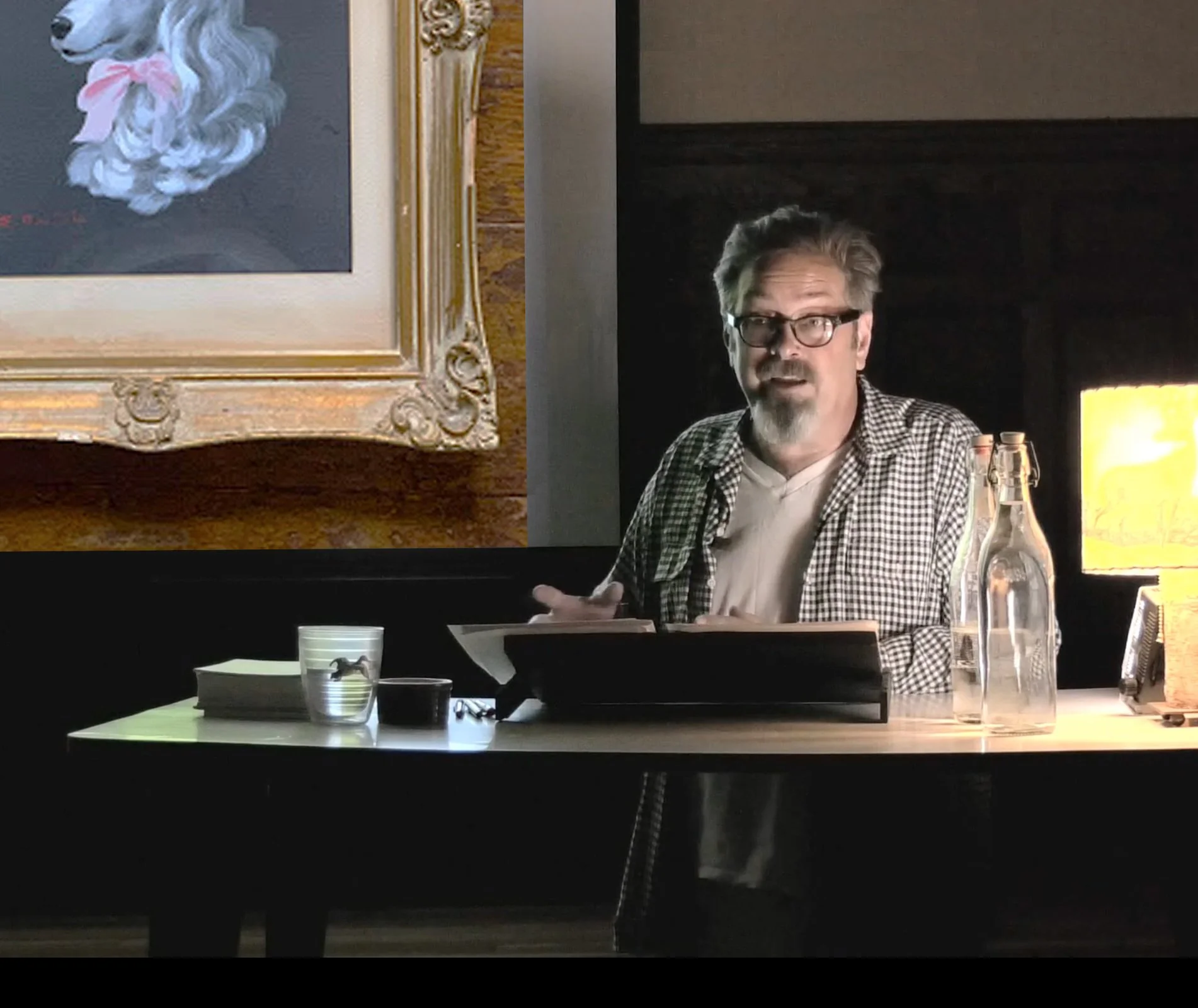The Narrative of Things
A deeper look at the exhibition and artists.
Curatorial Statement -Tamara Rafkin
Humans and Objects; we have a long history with them, our use of them, our collections, our toys, and through all of those weave together narratives that we create tied to objects. They tell stories about people, moments, beliefs and memories.They invoke fantasy, wishes and dreams - symbols of things to yet to come and moments of the past.
This exhibition highlights four artists: Kathleen Vance, Norm Magnusson, Shari Diamond and Tamara Rafkin, all working with these concepts in various ways from their own perspectives, all with a sense of narrative in their works.
Vance’s Traveling Landscapes create new narratives for cases and containers that have had a life by building landscapes that evoke other places in the interiors of the object. Building new narratives for both the object and the viewer through the perspective of her feelings of story tied to the container.
Magnusson’s Memory Sale builds vignettes around objects he had in his home that he started to sort out during the 2020/2021 COVID quarantine, creating stories about each object - binding a memory to the object and offering the memory as the item for sale, the object itself is an added bonus in the purchase. Creating art from an intangible memory bound in prose and bonded to a second hand “ready-made” object.
Diamond’s The 60 year Project is a way of celebrating and reflecting upon entering their sixth decade of life by looking through snapshots and the stories tied to them. By altering the images through a layer of processes, the images dissect the process of memories and one’s own narrative - an exploration of how our view of memories change overtime and become objects of their own.
Rafkin’s Lost&Found Series began with a fascination for how people find a lost object and set it somewhere prominent to be found again by the person who lost it. Finding this behavior across cultures and continents, it shows how humans empathize and are kind. Knowing their own feelings for lost items and in many instances building a story about the item and person that they connect to are compelled to ‘save’ the lost item to be returned.
From landscapes that create stories to stories created around household items, reflections on one’s own life stories and stories lost and found, there are so many narratives we build around the objects that we interact with. Both the objects and the stories all become about us and the human condition. We are narrative creatures, storytelling is part of our souls and connects us all - sometimes through our things.
Kathleen Vance ‘Traveling Landscapes’ Artist Statement
My Traveling Landscapes series delves into the idea of travel and protecting our natural resources: in particular water sources. (This is why many of the Traveling Landscapes sculptures have an active flowing water component.) I want people to really investigate and have a sense of discovery with these installations and sculptures. I have been using primarily vintage travel cases: train cases and steamer trunks to relate to a time when travel was slower and the distances between us and our homelands and foreign landscapes were more difficult to access. The cases act to abstract the idea of travel and romanticize its idyllic qualities.
I am always on the lookout for cases that have some indication of travel, with notes and markers which give a feeling that they have really been used for transportation of someone’s special or personal items. The landscapes created for each and contained within, are inspired by these impressions.
Recently I have been experimenting with more unconventional cases. And with these less commonly found and less familiar travel cases, the landscapes within have also expanded to more unconventional landscapes, as can be seen in scenarios such as the composition in “Traveling Landscape, Assembly”. I am thinking about a direct relationship of the contents and the container, distorting markers of scale. Included in these new series is a direction towards the ornamentation of the cases - one of my more recent sculptures is created with a very elaborate, more ornamental chest, which I selected to expound more upon the idea of the preciousness of its contents. Very much like a treasure chest, the contents, rather than gold (myrrh or frankincense) are that of a bucolic landscape. Water and our natural open landscapes are our legacy to the future generations and something that must be protected and cherished.
To see more about Kathleen Vance please visit her website here
Norm Magnusson ‘Norm’s Memory Sale: Fictional-ish stories attached to real objects I'm getting rid of.’ Artist Statement
About a year ago, I was cleaning up the “random kitchen implements drawer” when I came upon a cookie cutter in the shape of a duck. I picked it up; it had probably been with me through a dozen or so moves: houses, apartments, etcetera, and I’d never ever used it. Maybe it was time to get rid of it, sneak it into a free pile at a neighbor’s yard sale, or just throw it away.
Instead, I decided to create a fictional provenance for it . . . invent a story with the duck cookie cutter as the hero, or at least: a key character. And so that’s what I did. And I really enjoyed it, so I did it again. And again. And again.
Now, I have 24 of these little stories completed (for 24 of these random objects) and I’m sharing a big bunch of them here in this exhibition and will be performing a smaller bunch of them here on March 12, alternating with improv guitar played by the amazing Peter Dougan.
To Read the ‘Memory Sale’ Stories click here
To see more about Norm Magnusson please visit his website here
Shari Diamond ‘The 60 Year Project’ Artist Statement
The 60 Year Project consists of 60 images representing 60 moments over 60 years. These images selected from my family or personal archive for each year of my life, undergo a series of processes that strip away the details leaving the essence of the moment. 60 years ago, I lay in a crib while my mother watched over me. I don’t remember this moment, but a photograph tells me it happened. Our lives are a multitude of moments experienced, remembered, and forgotten. Time passes but do we notice? I see the changes that have occurred over time. In this series, I try to document these changes.
My art practice is an investigation into topics ranging from borders and boundaries, sexuality, gender, immortality, and impermanence to human relations. If something interests or disturbs me, I want to consider it, meditate on it, and understand it better. Process is integral to my practice. In each series, I search for an artistic approach or method that provides the most effective entry for my investigation. It is always photo based, though I use a multitude of analog and/or digital processes. Narrative is a constant thread throughout my work, speaking to larger political conditions rooted in my personal experience of difference.
To see more about Shari Diamond please visit their website here.
Tamara Rafkin ‘Lost&Found’ Artist Statement
This work began with a fascination of how people when finding a lost object will pick it up and place it somewhere to be seen, so that it can be found by the person who lost it. It reflects humanity in how we are attached to our things, the stories connected to them, and how we empathize with others through knowing what it feels to lose something.
For me it shows a kindness that crosses all sorts of barriers: language, nationality, race, and brings us all together. It’s one of the small ways we are all looking out for each other in the midst of life’s chaos.
I’ve been photographing these objects since 2013 when I first came across one while adhering to some simple rules of my own–I never move an object and I never photograph an object that I have found lost and that I place. Since about the 3rd or 4th object I came across, I always photograph it twice: in close up and in situ.
It is a body of work in process that may never be completed, but it is my own cultural anthropological study that constantly makes me smile and feel a hope for humanity.
To see more about Tamara Rafkin please visit her website here




